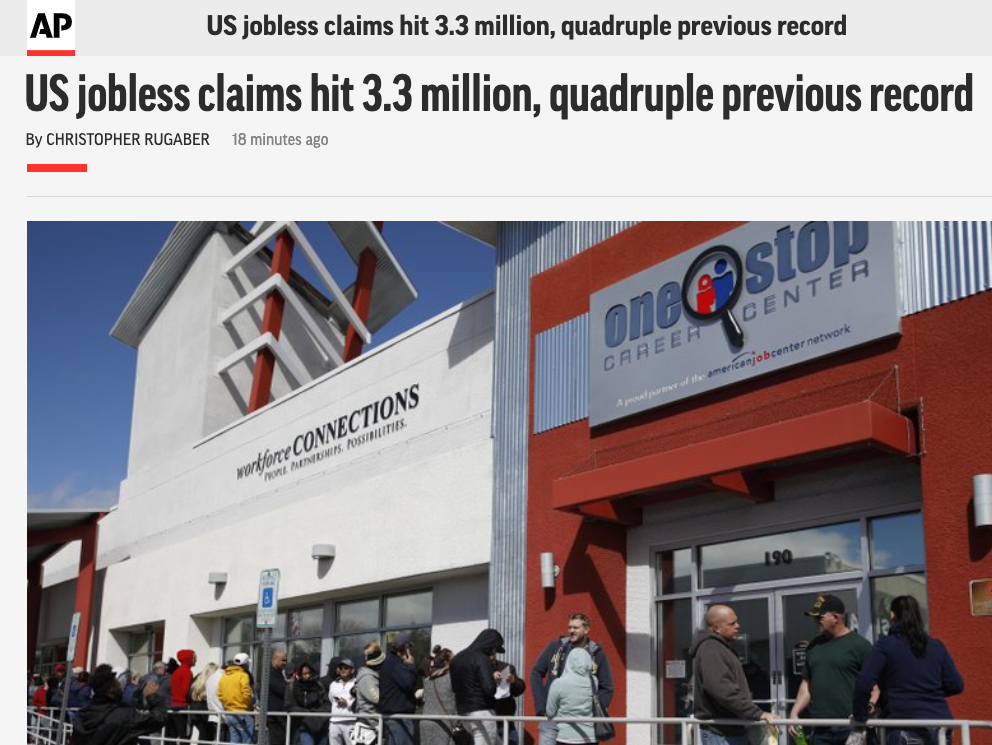Students in Assistant Professor Brandon Sheridan’s Intermediate Macroeconomic Theory are following data to gain better understanding of the economic disruptions COVID-19 is causing.
Students in Assistant Professor Brandon Sheridan’s Intermediate Macroeconomic Theory course are getting a real-time look at how a major public health disruption can create waves throughout the economy and the labor force.
During a typical semester, students track labor metrics such as jobless claims, which will typically vary little from week to week. But the novel coronavirus 2019 (COVID-19) outbreak is prompting drastic measures that are shutting down entire industries as the federal, state and local governments take action to limit the spread of disease. The mandated closure of restaurants, bars and other business in the service sector along with widespread disruptions in the travel and tourism industries have prompted sudden and drastic spikes in jobless claims.
The number of jobless claims typically only varies by several thousand per week, said Sheridan, a faculty member in the Department of Economics. “Now, we’re talking millions in just one week, which is mind-boggling,” Sheridan said. “Just this last week, it increased by the largest percentage change since the Great Recession. … This is making the Great Recession seem almost like a slow burn.”
On Thursday, March 26, the federal government reported that during the past week, nearly 3.3 million Americans applied for unemployment benefits, more than quadruple the previous record set in 1982, according to the Associated Press.
Sheridan said that the unemployment systems in a lot of states are going to be severely taxed by the sheer volume of jobless claims. Workers are already reporting an inability to access unemployment websites and online services given the rapid rise in jobless claims, Sheridan said.
“And that was before this week, which we think is probably going to be the big week,” Sheridan said.
Jobless claims are just one of the metrics students in Sheridan’s class typically track in their “macro journals,” and tracking that data helps them better understand the different forces at work in the economy. They are now seeing wide fluctuations in the data in real time and are gaining an understanding of the broad impact of COVID-19 on the national economy, Sheridan said.
Monday, March 23, was the first day of online teaching at Elon as classes shifted away from in-person teaching in response to the COVID-19 spread, and Sheridan said he opened the class by fielding broad questions from students about what is going on today in the economy. “They are starting to see that this could have far-reaching implications not only for their lives today, but possibly when they graduate as well,” he said. “As news items pop up, those are going to be the things I use for examples. There’s no better learning opportunity than the current event students are living through at the moment.”
There’s no better learning opportunity than the current event students are living through at the moment.
— Brandon Sheridan, assistant professor of economics
“I think that can help students who may be stressed about the economy in general,” Sheridan said. “If you have a better understanding of what the problem is, it can maybe reduce the stress a little bit by understanding the implications and what can be done to solve it.”
Sheridan said he is adapting his syllabus to devote more time to talking about the role of the Federal Reserve in the economy. “We usually limit our discussion to ‘traditional’ monetary policy tools such as changing interest rate targets,” Sheridan said. “Now, however, the Fed has unveiled many extraordinary measures, so I plan to discuss these with students to give them a basic understanding of what the Fed’s actions are intended to do.”



